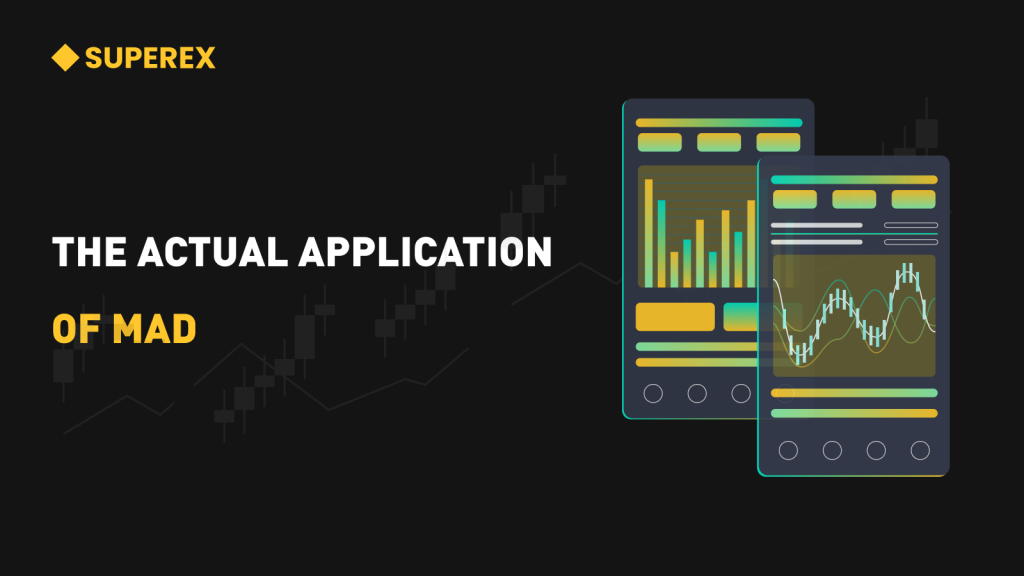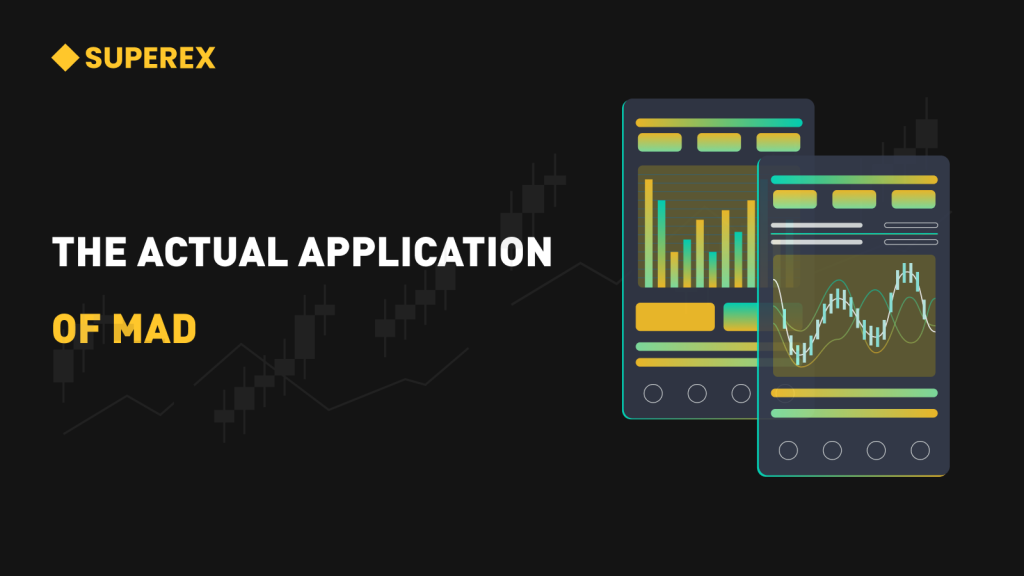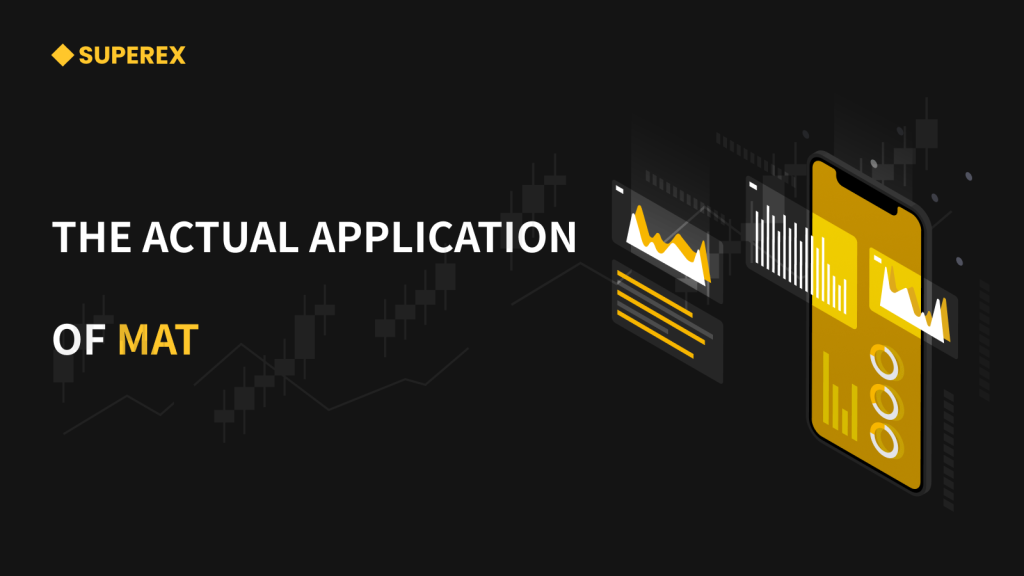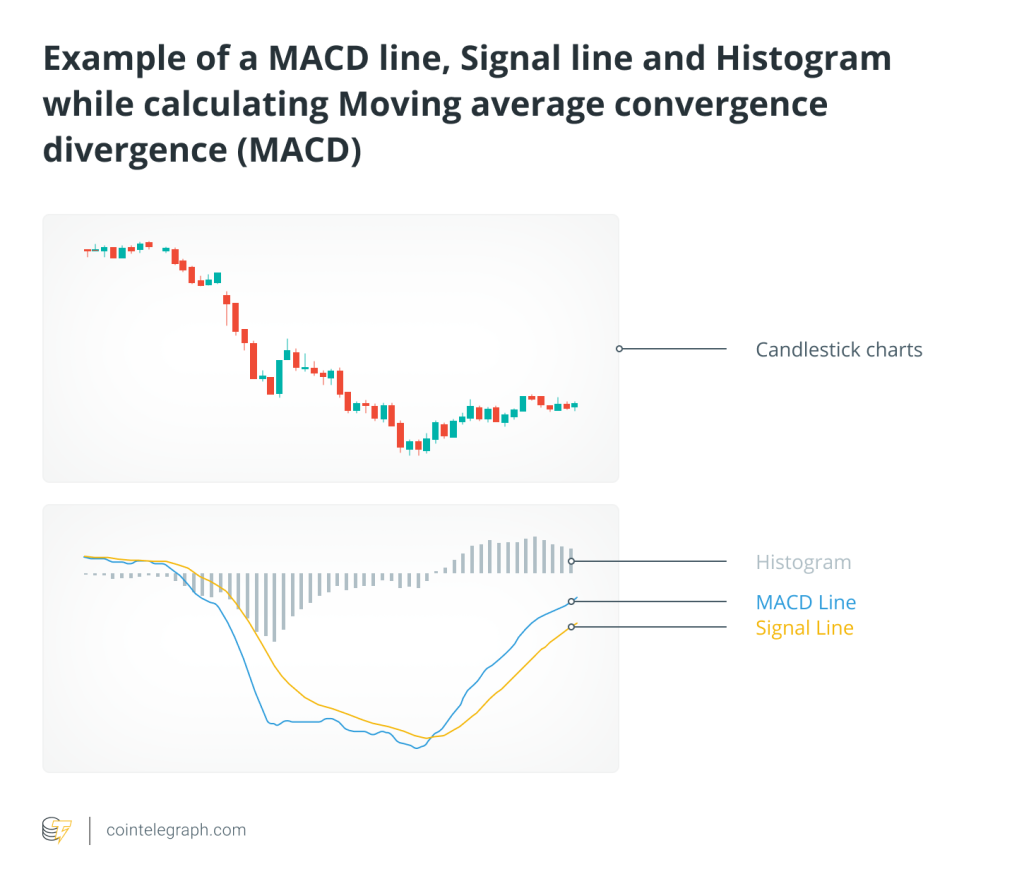LEARN MOVING AVERAGE DOUBLE (MAD) IN 3 MINUTES – BLOCKCHAIN 101

The Moving Average Double (MAD) indicator is a technical analysis tool that combines two moving averages with different time periods to analyze market trends. By observing both short-term and long-term price movements, MAD helps traders identify trend shifts and generate buy and sell signals. It filters out short-term noise and provides a more stable view of the market’s overall direction.
MAD typically involves two moving averages: a short-term moving average (often set to a smaller period, like 20 days) and a long-term moving average (set to a longer period, like 50 or 200 days). When the short-term moving average crosses over the long-term moving average, it often signals a potential buy or sell opportunity.

How the MAD Indicator Works
The MAD indicator generates signals by observing the crossover of two moving averages:
Golden Cross: When the short-term moving average crosses above the long-term moving average, it indicates a potential upward trend, known as the “golden cross,” which is typically a buy signal.
Death Cross: When the short-term moving average crosses below the long-term moving average, it signals a potential downward trend, known as the “death cross,” which is typically a sell signal.
MAD smooths out price movements to highlight trend reversals and reduce the risk of losses due to frequent trades. By combining short-term and long-term trends, MAD helps traders identify reliable entry and exit points in volatile markets.
by now, I’m sure many of you who have been following SuperEx Academy for a while have noticed that the MAD indicator is quite similar to the MACD indicator—don’t worry, we’ll cover that later on.
How to Use MAD in Trading
MAD is often used in the following scenarios:
Trend Confirmation: MAD helps traders confirm whether a trend reversal signal is strong enough to act upon. For example, after a golden cross, a trader might wait for further price confirmation before buying, while a death cross could indicate a selling opportunity.
Catching Entry and Exit Points: By watching the crossover of the short-term and long-term moving averages, traders can capture significant price movements. MAD is particularly useful for long-term traders who are more interested in overall trends than short-term fluctuations.
Combining with Other Indicators: MAD is often paired with other technical indicators like the Relative Strength Index (RSI) or Bollinger Bands to improve signal accuracy. For instance, a golden cross combined with an overbought RSI signal can confirm the strength of the trend.
Advantages of MAD
Noise Reduction: By using moving averages to smooth market volatility, MAD reduces the impact of short-term price fluctuations, making it easier to spot trends.
Simplicity: The signals generated by MAD are straightforward, requiring traders only to observe the crossing points of the two moving averages.
Accurate Trend Detection: Compared to a single moving average, the double moving average approach is more effective at identifying trend changes and reducing false signals.
Limitations of MAD
Lagging Indicator: Since MAD is based on historical price data, its signals are typically delayed, meaning traders may miss optimal entry or exit points.
Less Effective in Ranging Markets: In markets without clear trends, MAD may produce frequent false signals, leading to confusion or poor trades.
Optimizing MAD for Better Results
To reduce the lag of MAD, traders can adjust the time periods for the short-term and long-term moving averages. For more volatile markets, shortening the period for the short-term moving average or combining MAD with volatility indicators like Bollinger Bands can improve trend identification.
Lastly, let’s talk about the differences between the MAD and MACD indicators.
Moving Average Double (MAD) and MACD (Moving Average Convergence Divergence) are both based on moving averages, but they differ significantly in their calculation and application. Here’s a comparison of the two:
- Calculation Method
MAD (Moving Average Double): The MAD indicator consists of two moving averages: a short-term and a long-term moving average. The main signal is generated when these two lines cross. The short-term average reacts more quickly to price changes, while the long-term average gives a more stable market direction. Traders typically buy when the short-term average crosses above the long-term average and sell when the short-term average crosses below.
MACD (Moving Average Convergence Divergence): MACD is based on Exponential Moving Averages (EMAs). It calculates the difference between two EMAs (usually 12-day and 26-day) to form the MACD line. A 9-day EMA of the MACD line is used as the signal line. Additionally, MACD includes a histogram that shows the difference between the MACD line and the signal line, helping traders identify momentum changes and trend reversals.
- Purpose and Signal Generation
MAD: MAD is mainly a trend-following tool. The signal is generated when the short-term moving average crosses the long-term one. It is well-suited for identifying long-term trend changes and reducing market noise.
MACD: MACD serves both as a trend-following and momentum indicator. Traders use the crossovers between the MACD line and the signal line, as well as changes in the histogram, to assess momentum and potential trend shifts. MACD works well in volatile markets, providing more complex buy and sell signals.
- Use Cases
MAD: MAD is ideal for traders who want to simplify their decision-making process, particularly those focused on long-term trends. It is more effective in stable markets because it filters out smaller fluctuations and follows larger trends.
MACD: MACD is better suited for traders who want to combine trend and momentum analysis, especially in more volatile markets. It provides more detailed information, making it useful for both short-term and long-term traders.
- Types of Signals
MAD: The primary signals in MAD come from the crossover of the two moving averages. When the short-term average moves above the long-term average, it signals a buy; when it moves below, it signals a sell. It’s a straightforward trend-tracking tool.
MACD: MACD signals come from more than just the crossover. Traders also watch the histogram’s behavior, the MACD line’s position relative to the zero line, and divergence between price and the MACD. This allows for a more nuanced view of market trends and momentum shifts.
Summary:
MAD is simpler and focuses on clear trend identification, primarily relying on moving average crossovers.
MACD offers deeper analysis by combining trend and momentum indicators, making it more versatile for traders who need more complex signals.
The Moving Average Double (MAD) indicator is a powerful yet simple technical analysis tool that helps traders confirm trends and identify entry and exit points. By observing the crossover of two moving averages, MAD offers clear trend signals. While it has some lag, when used in combination with other indicators, MAD can minimize false signals and is an excellent choice for long-term trend trading.







Responses